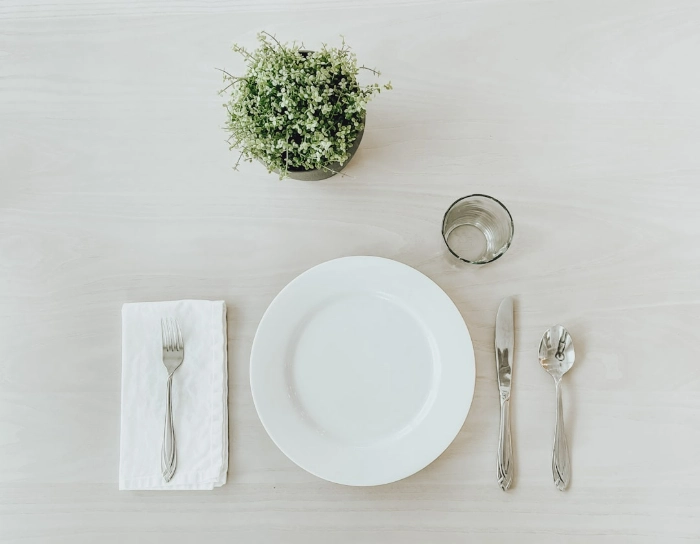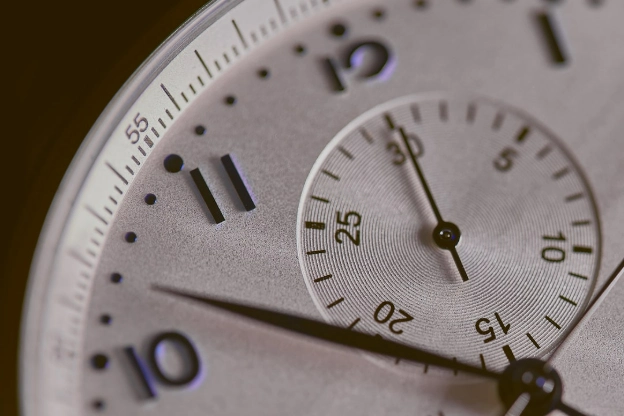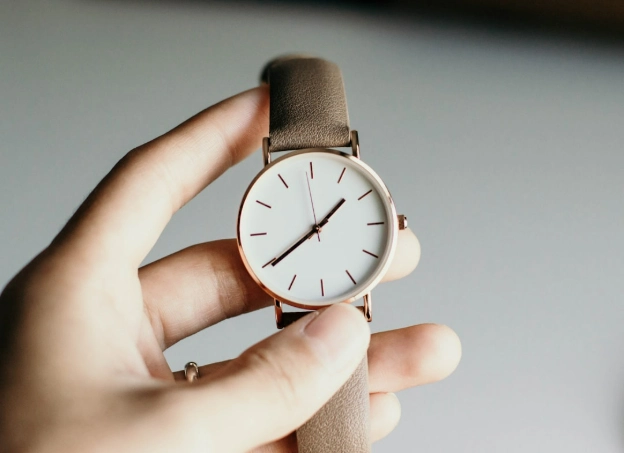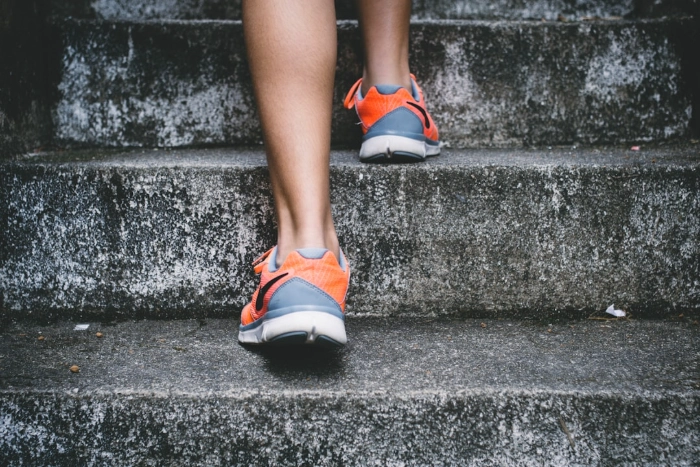How to Start Intermittent Fasting After Fifty

In this blog post, I'm going to share the biggest lifestyle change after fifty that helped relieve my hot flashes and other menopausal symptoms. Around age fifty, I experienced some serious menopausal symptoms: hot flashes, insomnia, irritability, and rapid weight gain. My hot flashes got so bad that they took over my life! When my hot flashes were at their worst, I was constantly sweating. ALL DAY and ALL NIGHT LONG. I couldn't think clearly, get comfortable, or sleep at night. I was completely miserable, all because of constant hot flashes. I could never get comfortable. At work during the day, I couldn't focus on my work... at night, in bed, I tossed and turned. I wrote in my previous blog posts how I was suffering from so many menopause symptoms and tried the popular medical remedies, but nothing really helped. Then I discovered intermittent fasting for menopausal women after fifty, and I couldn't believe how quickly this one lifestyle change cured my hot flashes and other menopausal symptoms! The following guide can help you learn how to start and intermittent fasting routine, common mistakes to avoid, and how to choose a fasting schedule that works for you...
How I Began My Intermittent Fasting Journey (Safely)
When I first discovered intermittent fasting for menopause, I was searching high and low for a natural way to relieve my hot flashes (the major source of my discomfort). When I heard that intermittent fasting could help with my hot flashes, I figured I had nothing to lose by trying it. However, I had a few concerns: How difficult will this be? Can I actually do this? Can I do this safely without fear of falling into an eating disorder? After doing a bit more reading and research (Dr. Jason Fung has published some easy-to-understand and informative research on fasting), I decided to try it. After all, I could always decide it wasn't for me and return to my regular eating schedule of three meals a day and snacks all day long. I actually found the 20:4 intermittent fasting schedule much easier than I had anticipated, since there was nothing to buy and no rearranging my schedule to add another thing to my to do list. This is how I organized my schedule:
I fasted for 20 hours each day and had an eating window of four hours. For example, I start fasting at 8:00 p.m. each evening— no eating or drinking other than water after 8:00 p.m.
I usually go to bed by 10:00 p.m. and wake up around 4:00 a.m.
I skip both breakfast and lunch.
At 4:00 p.m. I have a snack, usually plain yogurt topped with fruit and honey.
At 6:30pm I eat a high protein dinner. This is during my four hour eating window— from 4:00 p.m. until 8:00 p.m.
After 8:00 p.m., I don't eat again until the next day at 4:00 p.m. This is my 20-hour fasting window.
When I first started this 20:4 intermittent fasting routine, it relieved my hot flashes within three days. I wrote about this is more detail in one of my first blog posts. I couldn’t believe that it was this simple.
What's the Best Way to Start Intermittent Fasting?
For me, the 20:4 Intermittent fasting schedule worked wonders for my hot flashes and insomnia. Within three days, I felt like a new woman! I jumped in full force, but if you've never fasted before or can't remember the last time you skipped a meal or left the house without a baggie of almonds or a protein bar in your purse (just in case), you might want to slowly work up to the 20:4 schedule. Don't jump strait into 16:8 or OMAD (One Meal a Day), as your hormones might need time to adjust. Here is a gradual schedule:
Step 1 (Week 1): 12:12 Fasting Schedule
12 hours fasting / 12 hour eating window
Example: Stop eating at 7pm and eat breakfast at 7am. No snacks or drinks (besides water or black coffee) between 7pm and 7am
The main emphasis here is to eliminate nighttime snacking
Step 2 (Week 2): 14:10 Fasting Schedule
14 hours fasting / 10 hour eating window
Example: Stop eating at 7pm and eat breakfast at 9am. No snacks or drinks (besides water or black coffee) between 7pm and 9am
This is where many women notice less bloating (reduced puffiness)
Step 3 (Week 3): 16:8 Fasting Schedule
16 hours fasting / 8 hour eating window
Example: Stop eating at 7pm and eat your first meal at 11am. No snacks or drinks (besides water or black coffee) between 7pm and 11am
If your energy tanks or you get irritable, go back to 14:10
This is where many women feel less irritable and a focused sense of calm
Step 4 (Week 4): 20:4 Fasting Schedule
20 hours fasting / 4 hour eating window
Example: Stop eating at 8pm and eat your first meal at 4pm. No snacks or drinks (besides water or black coffee) between 8pm and 4pm
This is where you might have a substantial protein snack around 4pm and eat a nutritious dinner around 7pm
This is where some women notice a significant reduction in their menopause symptoms, like hot flashes, insomnia, and inflammation
This is a gradual release schedule, starting small (only fasting for 12 nours) and building up to 20 hours of fasting. Take it as slow as you need to. Once I felt confident with my 20:4 schedule, I allowed myself a few days each month to take a break from fasting, especially if there was a celebration or special dinner event. If someone is celebrating with cake, don't deny yourself if you want to join in. Celebrate the good stuff, then go back to your fasting schedule the next day.
Unexpected Benefits of the Intermittent Fasting Lifestyle
Once I got the hang of my fasting schedule, I noticed some interesting and unexpected benefits... more time and money for enjoying life!
No stopping at fast food restaurants
No spending money when I forget to pack lunch
No wondering what to make for breakfast
More time in the morning to read and drink coffee (plain, no cream or sugar)
No more paying premium prices for mediocre food on long trips (like when you are trapped at the airport terminal or stopping for gas)
Save time on trips-- no stopping for food, snacks, drinks, etc.
Once you see and feel the benefits intermittent fasting can bring to your life, it will be easy, enjoyable, and a healthy habit. After only three days my hot flashes stopped completely. So I continued to fast on most days, usually Monday through Friday when I'm at work. On the weekends or special occasions, I'm more relaxed. Remember, when you get invited to a special dinner or party, go and eat the cake, guilt free!
More Benefits of Intermittent Fasting
Once I started intermittent fasting, my hot flashes went away within three days (incredible!), and I started noticing other benefits:
Less puffiness
Clothes fitting better
Sleeping better
More energy
Less irritable
I couldn't believe the results I was getting! Because this experiment was so successful, I still practice intermittent fasting for 20 hours daily with a four-hour eating window almost every day. My hot flashes have never returned.
If you are curious as to how and why intermittent fasting works, check out Dr. Jason Fung's website. He is an expert in the field of health and intermittent fasting. As I mentioned earlier, his extensive research is comprehensive and fascinating. Learn more about intermittent fasting at www.DoctorJasonFung.com
There are also some encouraging studies on intermittent fasting and menopause symptom relief. One article published by the National Institute of Health gives specifics on this study.
Common Mistakes to Avoid with Intermittent Fasting
Confession time: I had learned about intermittent fasting for health many years prior to menopause, and I tried it. I didn't notice any health benefits; I didn't feel or look any better. It turns out, I was doing intermittent fasting ALL WRONG! Here are some of my mistakes and common pitfalls to avoid:
Not eating enough protein
Drinking coffee before you drink water first thing in the morning
Forcing yourself to fast when you are ill or run down
Putting collagen, cream, MCT oil or any other supplement in your coffee
Drinking flavored waters or teas (these have added calories)
Using sugar-free sweeteners in your coffee (even non-caloric sweeteners can cause a blood sugar spike)
I thought I was fasting until noon every day, but I would put all kinds of stuff in my coffee, like half and half and MCT oil. That caused my insulin to rise, and I was no longer in a fasted state. No wonder I didn't see any benefits!
Looking for Hot Flash Relief?
Dear Reader, if you are suffering from hot flashes and need relief, consider intermittent fasting. It is ZERO cost, no risk, and can alleviate menopausal symptoms. You deserve to live your best life after 50! If you want to learn more about feeling better, thriving through menopause, and kicking pain to the curb, join our email list at the Pain Free Over Fifty community. We'd love to hear from you! Wishing you less pain, more life, and much joy!
Jennifer Kaye
Read Next
7 Delicious and Easy Snack Ideas to Break Your Fast and Support Menopause Symptoms










